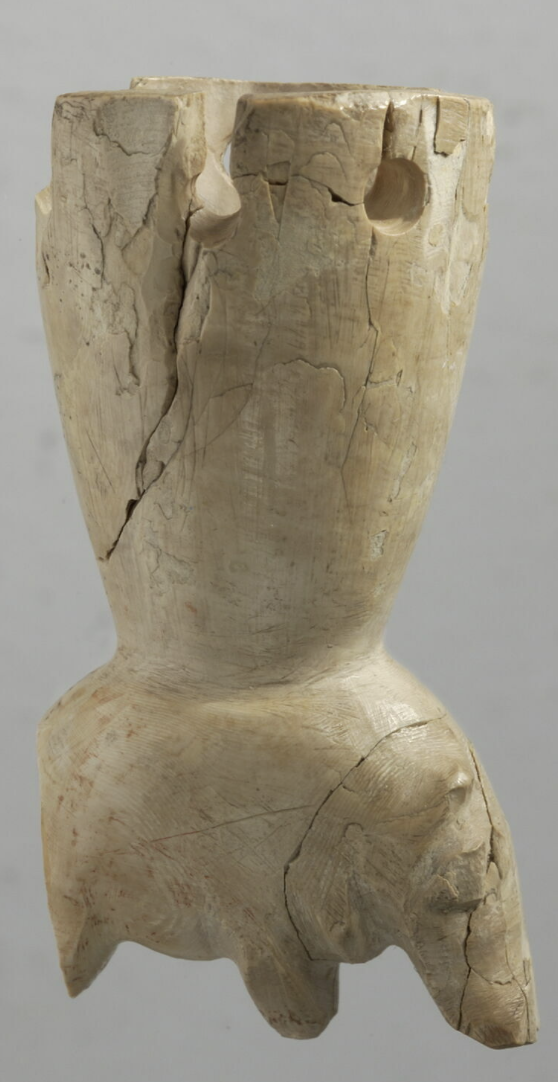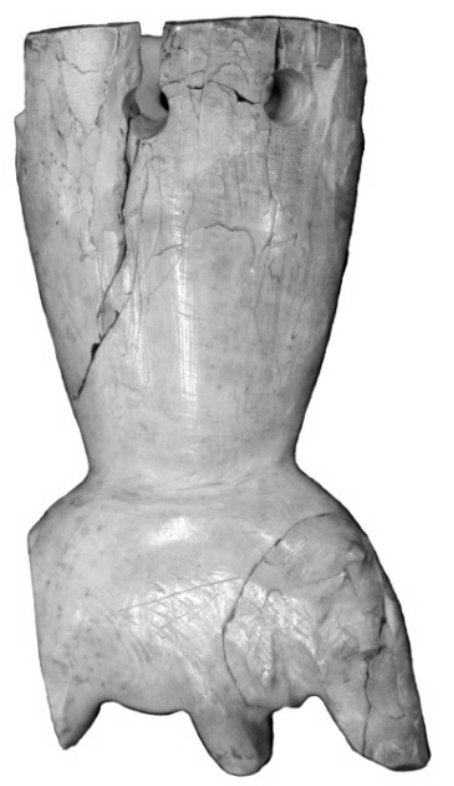Tusk – on hippopotamus back TUK-0004
By Kim, Hwidahm
Archaeological site unknown.
10.1937 : Bought by Curtis in Cairo Nahman gallery. 07.04.1938 : Donated to Musée du Louvre.Paris, Musée du Louvre, E 22902 (Curtis n°403).
Date : Date provided by Droux 2015
Material : Ivory (undefined) (Carved)
Preservation : Almost complete
Preservation information :
The figurine was assembled from many fragmaents as the crack lines are visible. Some parts around the rim are missing along with the back side of the figurine.
Decoration
A hippopotamus figurine is on the bottom with ivory tusk protuding from its back. The depression on the top was created naturally by the pulp cavity of the tusk. There are seven perforations around the rim. The hippopotamus figurine is carved in detail; one can see the folded skin below the neck, small ears and eyes. The legs are short while the muzzle is as long as the legs. Traces of red paint is detacable
Dimensions (cm)
5.7
2.9
Additional information
Comments
The ivory is probably hippopotamus ivory.
References
1977
Les ivoires (vol. 2): antiquité, Islam, Inde, Chine, Japon, Afrique noire, régions polaires, Amérique. Paris
, p. 57, ill. p. 57.1989
Das Nilpferd in der Vorstellungswelt der alten Ägypter. Teil I, Katalog. Europäische Hochschulschriften VIII, 22. Frankfurt am Main
, doc. 33b.2011
Twinned hippopotamus figurines of the Predynastic period, in: Friedman, Renée; Fiske, Peter N. (eds), Egypt at its origins 3: proceedings of the Third International Conference “Origin of the State. Predynastic and Early Dynastic Egypt”, London, 27th July – 1st August 2008. Orientalia Lovaniensia Analecta 205. Leuven
, 352-353, table 1.

